Google Announces Stadia: A Game Streaming Service
by Ian Cutress on March 19, 2019 1:12 PM EST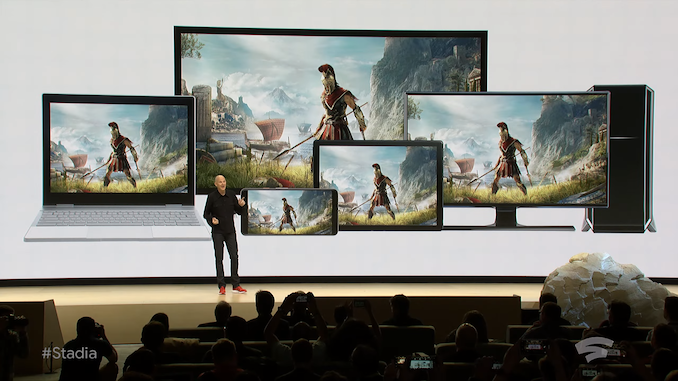
Today at GDC, Google announced its new video game streaming service. The new service will be called Stadia. This builds on the information earlier this year that AMD was powering Project Stream (as was then called) with Radeon Pro GPUs, and now Google is confirming the project is a primary partner using AMD’s next generation GPUs. (Edit: AMD reached out to confirm that their press release only mentioned GPUs.)
Stadia is being advertised as the central community for gamers, creators, and developers. The idea is that people can play a wide array of games regardless of the hardware at hand. Back in October, Google debuted the technology showcasing a top-end AAA gaming title running at 60 FPS. Google wants a single place where gamers and YouTube creators can get together – no current gaming platform, according to Google, does this.
Ultimately Google wants to stream straight to the Google browser. Google worked with leading publishers and developers to help build the system infrastructure. Google is one of a few companies with enough content delivery networks around the world to ensure that frame rates are kept high with super low latency.
Users will be able to watch a video about a game, and instantly hit ‘Play Now’ and start playing the game in under five seconds without any download and lag. The idea is that a single code base can be enjoyed at any stream. At launch, desktop, laptop, TV, tablets, and phones will be supported. With Stadia, the datacenter is platform. No hardware acceleration is required on the device. The experience can be transferred between devices, such as chromebook to smartphone.
One of the highlights of Google’s demonstration of Stadia was the platform working on Google-enabled TVs.
The platform allows users to have any USB connected controller, or mouse and keyboard. Google will also be releasing its own Stadia Controller, available in three colors – white, black, and light blue. The controller connects via Wi-Fi straight into the cloud, and also which device is being run (it’s unclear how this works).
The controller has two new buttons. The first allows saving and sharing the experience out to YouTube. The second is Google Assistant, using the integrated microphone in the controller. This allows game developers to integrate Google Assistant into their games. It also allows users to ask Google when they need help in a game - and the assistant will look for a guide to help.
Stadia uses the same datacenter infrastructure already in place at Google. There are 7500+ edge nodes allows for compute resources being closer to players for lower latency. Custom designed, purpose built hardware powers the experience. Interconnected racks have sufficient compute and memory for the most demanding games. The technology has been in development inside Google for years.
At launch, resolutions will be supported up to 4K 60 fps with HDR and surround sound. Future plans for up to 8K streaming at 120 fps are planned. The platform has been built to scale to support this. While playing, the stream is duplicated in 4K for direct upload – you get rendering quality video rather than what you capture locally.
The platform is instance based, so Google can scale when needed. Game developers no longer have to worry about building to a specific hardware performance – the datacenter can scale as required.
Sadia is powered by a custom AMD GPU with 10 TFLOPS of power, with a custom CPU with AVX2 support. Combined they create a single instance per person. Uses Linux and Vulkan, with full Unreal and Unity support. Havok engine support as well. Tool companies are onboard.
At a high level, the specifications for the GPU are almost a shoe-in for AMD's Radeon Vega 56, right down to the number of CUs and compute throughput. So while not confirmed, it's very likely that Google is using some kind of Vega 10 card; probably a variant of the Radeon Instinct MI25.
However it's notable (and unusual) that Google is only announcing their partner for the GPU and not the CPU. With AMD capable of delivering solid products in both categories, one would consider them a shoe-in for the CPU as well since they're already providing the GPU. However Google's announcement took special care not to announce the CPU partner, and even AMD emailed us that they could only confirm the use of AMD GPUs. So whether Google's CPU vendor is Intel or AMD remains to be seen. There are good arguments for each based on the vague specifications, though with AVX 2 support listed, if it is AMD then that would mean that Google has gotten their hands on some early Zen 2 CPUs.
One of the first games supported will be Doom Eternal from id Software, which will support 4K with HDR at 60 fps. Every user will get a single GPU with no other users.
UL Benchmarks (3DMark) has been working with Google to help benchmark the systems and measure the power of the infrastructure. Developers if required can use multiple GPUs, it appears.
Multiplayer is also supported, at least between different Stadia players. Distributed physics becomes possible, which means up to 1000 players in Battle Royale titles. There’s also the advantage, according to Google, of getting around hackers and cheaters.
Developers can support multi-platform multiplayer, and transfer save files between platforms. Game developers have already been working on MP demos with destructive environments using real-time rigid body physics, allowing for perfect synchronization.
Google also points out that split-screen gaming has not been a priority recently because of rendering two scenes at once. With Stadia, that problem disappears, as each player will be powered by a separate instance, reviving the idea of local co-op and squad based gaming. This also allows for multiple cameras for a single player to navigate a single map, for better tactics in certain types of games. Google says that this ability allows developers to create new types of games.
Built on Google’s platform, Stadia will also support machine learning. For developers that want to take advantage, they can incorporate Google and third-party libraries to help improve games over time and enhance the experience both on a per-user level and on a local/global scale.
The other focus on Stadia is the interaction with YouTube. Google points out that gaming has been a fundamental part of YouTube since its exception, and it is Google’s goal to help creators interact with (and monetize) their audience. The idea is that creators can directly livestream from Stadia, as well as play with creators through Stadia. ‘Crowd Play’ will allow users to play directly into the server instance with the creator – it acts like a lobby, so players will sit in line to play with their favorite creator. For example, the NBA2K above shows 'join this game (3rd in line)'.
Google states that any link from any location can act as a launch point for a title. This means that developers do not have to be limited to a single game store – games can be launched from almost anywhere, as long as the user is in an up to date Chrome browser. Google is also set to put extensive parental controls into the mix.
Google will be creating an entity called ‘Stadia Games and Entertainment’, headed up by Jade Raymond, enabling first party studios to use Stadia. Other partner studios will also work through the new division as outreach in order to enable game development on Stadia.
Developers who want to create for Stadia should go to stadia.dev to sign up for tools and resources. Stadia Partners for distributers. Stadia.com will be the hub for gamers.
Stadia will launch in 2019, in the US, Canada, UK, and most of Europe. No word on pricing yet, but Google will be announcing more in the Summer.


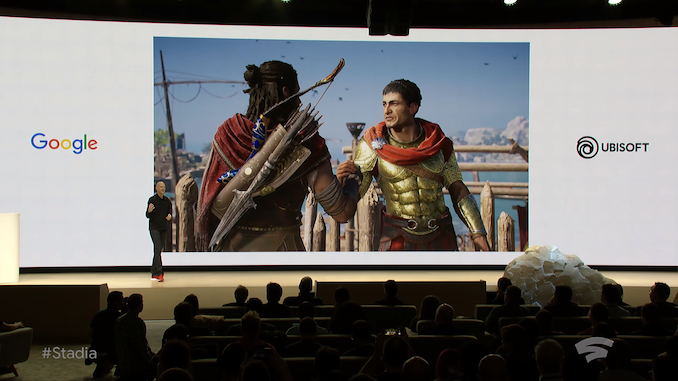
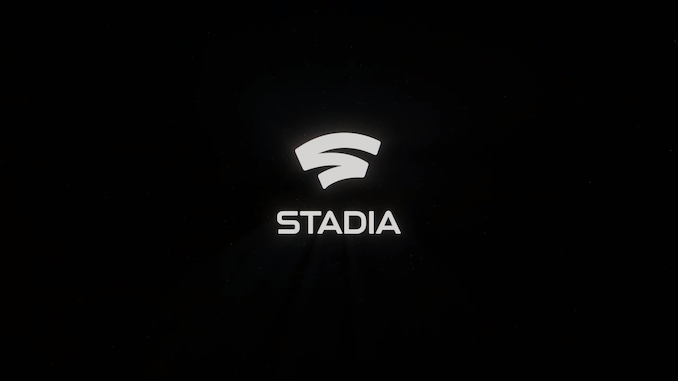

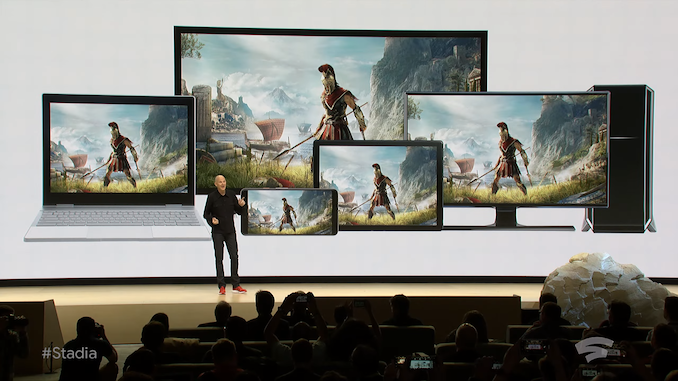
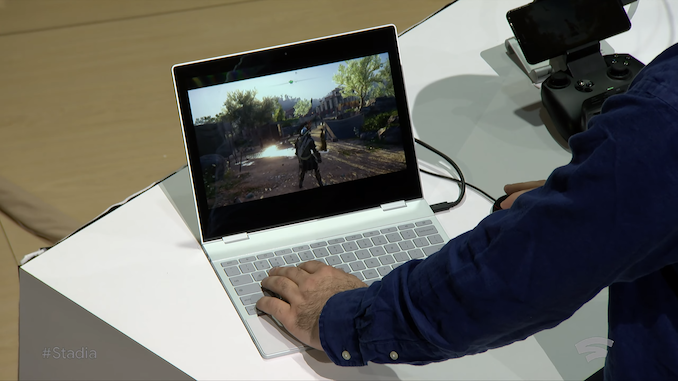
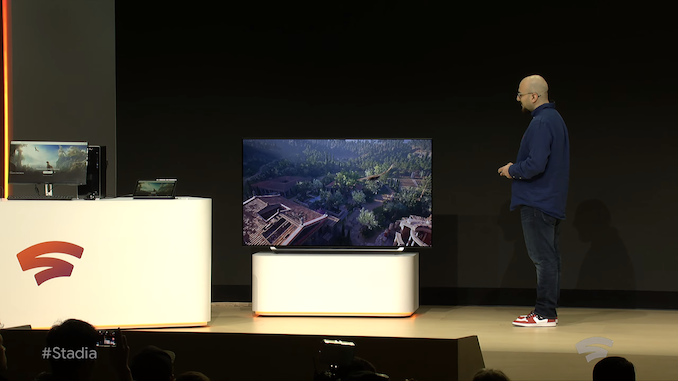
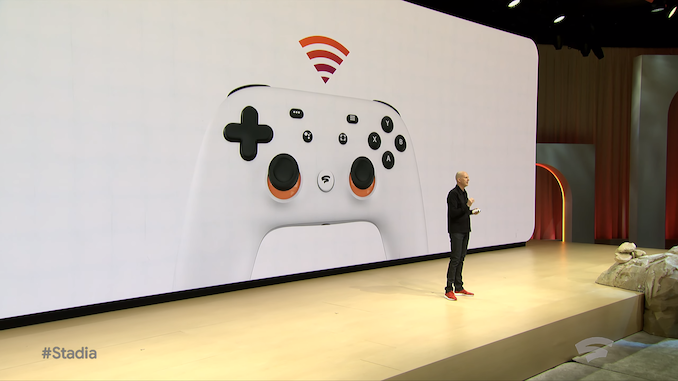
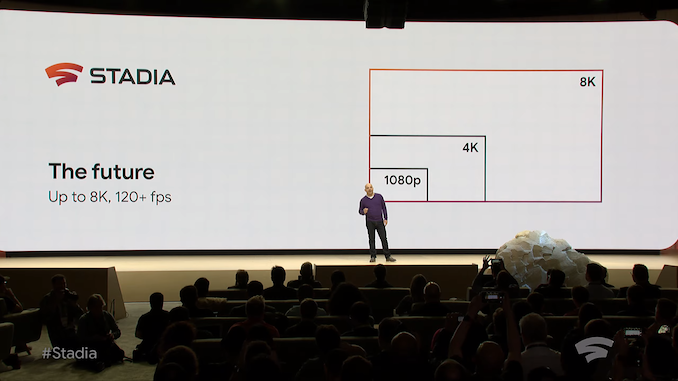
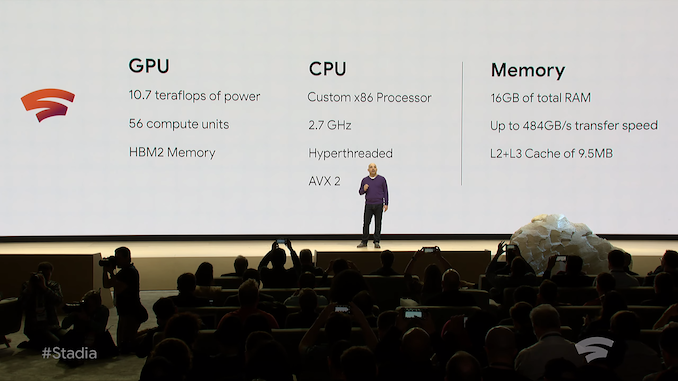
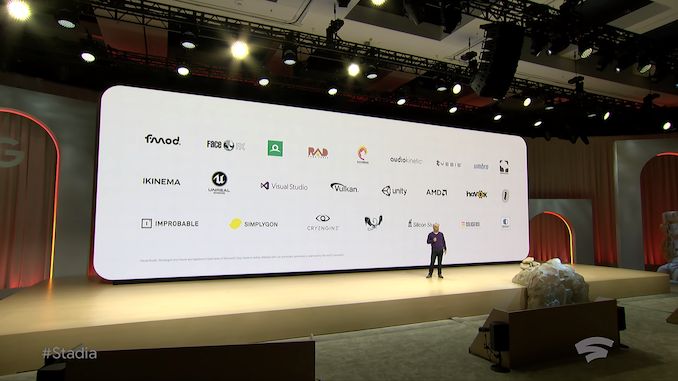

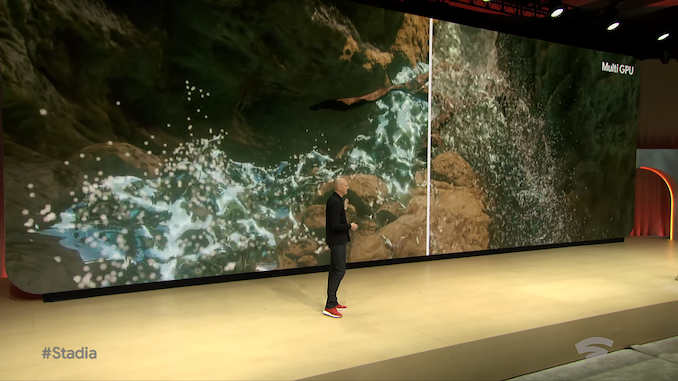
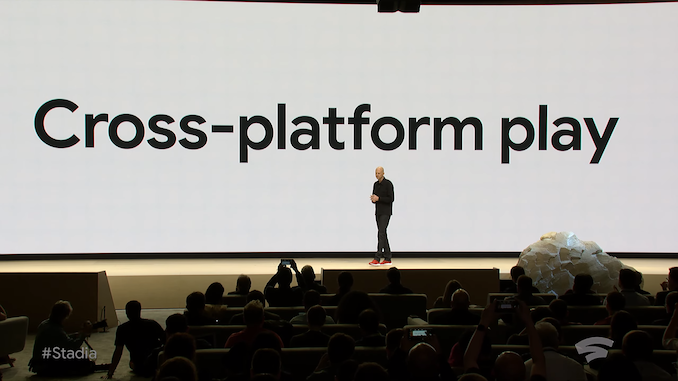
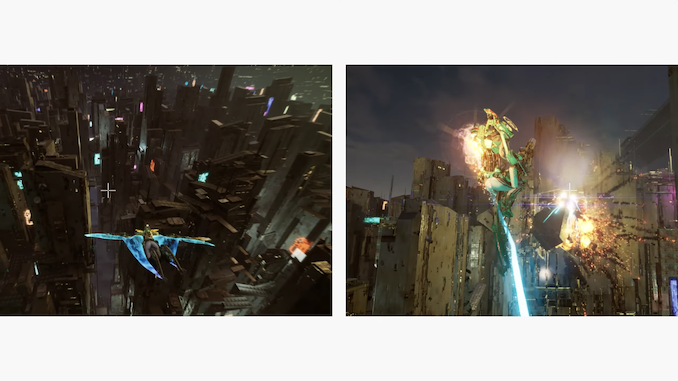

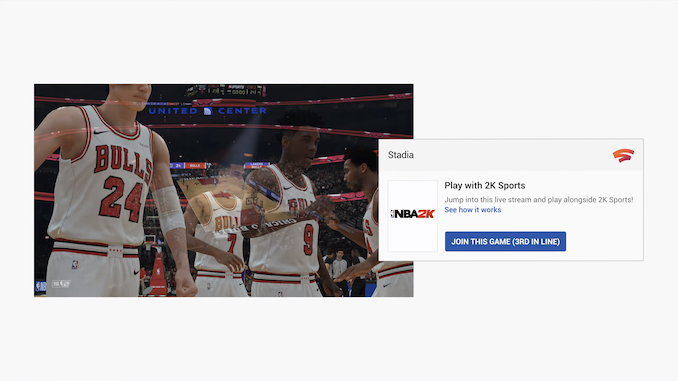
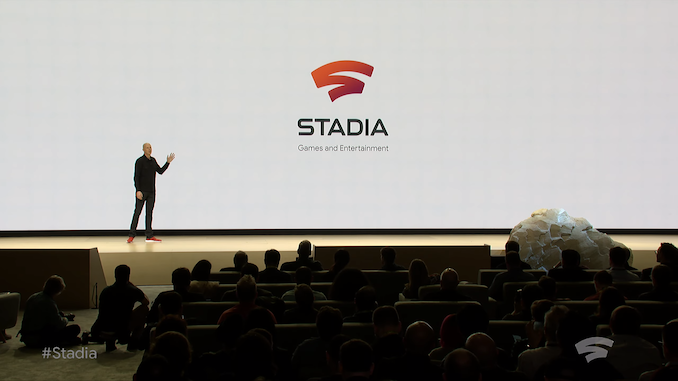








144 Comments
View All Comments
tipoo - Tuesday, March 19, 2019 - link
The speed of light is still a pretty hard limit. They'd have to build out a lot of widespread infrastructure to ensure low latency. And maybe they do, but that's why i want to play it before saying much.jeremyshaw - Tuesday, March 19, 2019 - link
There is a blurry line between having local nodes everywhere and Microsoft's Xbox rental program, IMO. That's basically what it takes to get latency down. That being said, if one never experienced low latency gaming, then they would never know what they are missing out on. Same with gsync/freesync, high refresh rates, etc. Even then, some people will not notice a difference.In the end, game streaming will probably be fine. Though I have a 60Mbps Comcast connection, and I would hesitate to call it "stable."
RSAUser - Tuesday, March 19, 2019 - link
A majority of the world has low bandwidth, even in "first world" countries like the U.S. Then as said, latency, also jitter. If I was playing on WiFi, there will still be a chance of packet loss, especially in e.g. cities with high density, think apartment blocks next to other apartment blocks.This "game service" will only be properly usable by a few, and only if you're used to it already, else most will rather have a PC/play on the device.
Latency for within the same city is usually fine, go past ~5-15ms, definitely not.
0ldman79 - Wednesday, March 20, 2019 - link
RSAUser knows the score.Streaming is often less than ideal even on the same layer 2 network.
I live in the boonies, started a computer service, built a wireless ISP from nothing, the towers, the hardware, everything. I've got tons of bandwidth in my home (do a lot of video editing as a hobby on my laptop) so I've got a little experience with networking.
Gran Turismo and Street Fighter are very sensitive to latency, particularly latency changes.
I can stream from one desktop to the other using Steam, stream to my laptop over 802.11ac (700+ air rates, 450Mbps confirmed in testing), stream from my PS4 over ethernet or wireless.
The latency is fine on most games, but certain ones are borderline unplayable. It is incredibly difficult to recover from a slide or the beginnings of a spinout when you only get the feedback and visual cues 5-10ms later.
Big explosions make the bitrate increase, which is fine, but often it doesn't increase quickly enough so it is pixelated badly and that sudden increase in bandwidth affects your latency as well.
We're talking about input latency of 1ms and video latency of under 6ms with hardware h264 encoding built into my GTX 970s.
The PS4 has hardware encoding as well, but there is still a delay.
Don't get me wrong, I love the streaming aspects of these systems, but it isn't a replacement for a console. Stuff like Modern Warfare, Skyrim, Fallout, those all work great. Matter of fact the compression tends to work out a lot of aliasing issues, so often you can stream a 1440p or 4k image to a 720p client and have a truly beautiful image when playing, but it just isn't quick enough for certain games.
It has made a few of my old Core 2 Duo systems useful again though.
They now work as portable monitors/gaming machines. They can't dream of running Arkham Knight but they function quite well as a remote control with display.
flyingpants265 - Thursday, March 21, 2019 - link
There are tests of similar services and they're behind by about 4 frames, or 65ms.gerz1219 - Tuesday, March 19, 2019 - link
I remember being pretty psyched when OnLive was first announced in 2009, and then actually seeing it in action sometime around 2010/2011. It was horrible! Lots of artifacts, constant shifting to lower bitrate streams, pretty bad latency, frequent long pauses. Game streaming has improved somewhat over the years (I tried out GeForce Now recently), but it's still nowhere near that initial promise. You switch from GeForce Now over to a locally rendered game and it's a night and day upgrade.The goalposts keep shifting too, in the sense that 2010 gamers would have been delighted with smooth 1080p/60 Hz gaming, but even if Google has that all sorted out it's unlikely they have 4K / 120 Hz low latency streaming working properly in the real world.
flyingpants265 - Thursday, March 21, 2019 - link
I don't agree, I think 1080p/30 will be the standard for streaming for the time being, and nobody will complain. Honestly surprised it's not 720p but I guess they have a good codec that can drop bitrate. Once you can instantly play games from YouTube, it won't matter what the quality or latency is, there will be little point in using anything else for most users.SirPerro - Tuesday, March 19, 2019 - link
I have lower latency with GCP compute nodes via WiFi in Europe than I have with my Bluetooth headset, or the input lag of my phone touchscreen for the matter.Manch - Friday, March 22, 2019 - link
LOL, no you dont.2b3o4o - Tuesday, March 19, 2019 - link
They have the vast majority of that infrastructure already set up for their other services, all they need to do going forward is bring Stadia hardware into their existing data centers.